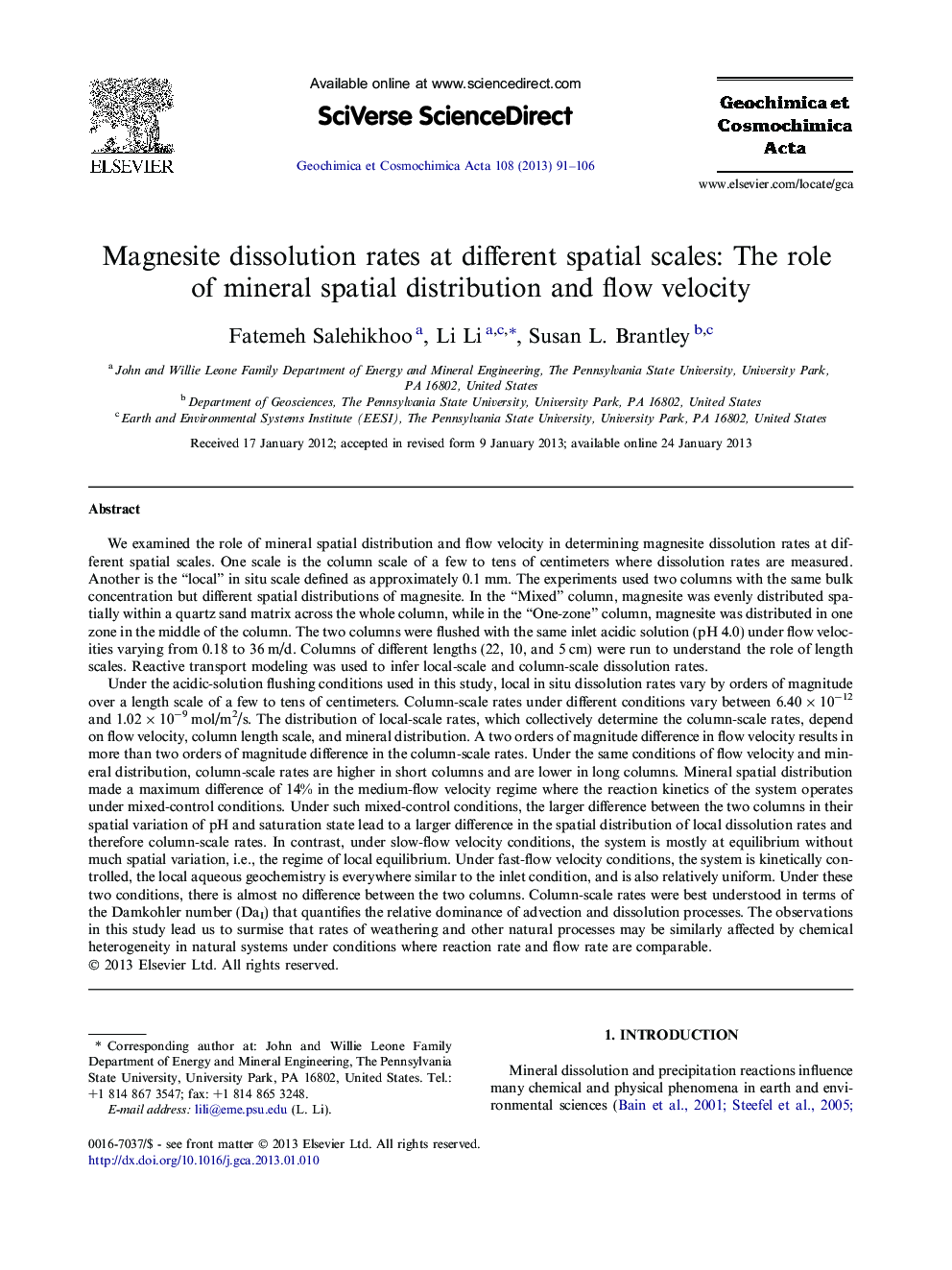| کد مقاله | کد نشریه | سال انتشار | مقاله انگلیسی | نسخه تمام متن |
|---|---|---|---|---|
| 6439153 | 1638049 | 2013 | 16 صفحه PDF | دانلود رایگان |
We examined the role of mineral spatial distribution and flow velocity in determining magnesite dissolution rates at different spatial scales. One scale is the column scale of a few to tens of centimeters where dissolution rates are measured. Another is the “local” in situ scale defined as approximately 0.1 mm. The experiments used two columns with the same bulk concentration but different spatial distributions of magnesite. In the “Mixed” column, magnesite was evenly distributed spatially within a quartz sand matrix across the whole column, while in the “One-zone” column, magnesite was distributed in one zone in the middle of the column. The two columns were flushed with the same inlet acidic solution (pH 4.0) under flow velocities varying from 0.18 to 36 m/d. Columns of different lengths (22, 10, and 5 cm) were run to understand the role of length scales. Reactive transport modeling was used to infer local-scale and column-scale dissolution rates.Under the acidic-solution flushing conditions used in this study, local in situ dissolution rates vary by orders of magnitude over a length scale of a few to tens of centimeters. Column-scale rates under different conditions vary between 6.40 × 10−12 and 1.02 × 10−9 mol/m2/s. The distribution of local-scale rates, which collectively determine the column-scale rates, depend on flow velocity, column length scale, and mineral distribution. A two orders of magnitude difference in flow velocity results in more than two orders of magnitude difference in the column-scale rates. Under the same conditions of flow velocity and mineral distribution, column-scale rates are higher in short columns and are lower in long columns. Mineral spatial distribution made a maximum difference of 14% in the medium-flow velocity regime where the reaction kinetics of the system operates under mixed-control conditions. Under such mixed-control conditions, the larger difference between the two columns in their spatial variation of pH and saturation state lead to a larger difference in the spatial distribution of local dissolution rates and therefore column-scale rates. In contrast, under slow-flow velocity conditions, the system is mostly at equilibrium without much spatial variation, i.e., the regime of local equilibrium. Under fast-flow velocity conditions, the system is kinetically controlled, the local aqueous geochemistry is everywhere similar to the inlet condition, and is also relatively uniform. Under these two conditions, there is almost no difference between the two columns. Column-scale rates were best understood in terms of the Damkohler number (DaI) that quantifies the relative dominance of advection and dissolution processes. The observations in this study lead us to surmise that rates of weathering and other natural processes may be similarly affected by chemical heterogeneity in natural systems under conditions where reaction rate and flow rate are comparable.
Journal: Geochimica et Cosmochimica Acta - Volume 108, 1 May 2013, Pages 91–106
